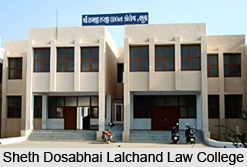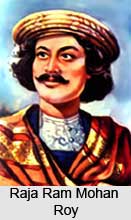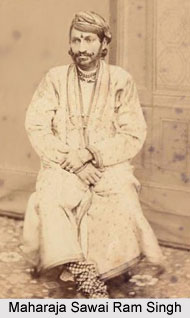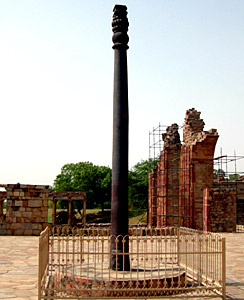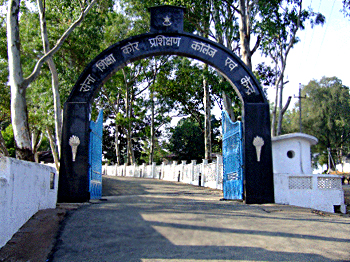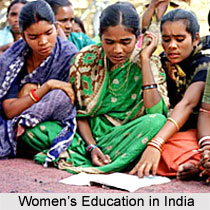 Women comprise approximately half of the population in the world. But the hegemonic masculine ideology made them bear a lot as they were denied equivalent opportunities in different parts of the world. The augment of feminist ideas has, however, led to the marvelous development of women`s condition in the society through out the world in recent times. Access to education has been one of the most urgent and important demands of theses women`s rights movements. Women education in India has also been a chief preoccupation of both the government and social or civil society as educated women can play a very important role in the development of the country.
Women comprise approximately half of the population in the world. But the hegemonic masculine ideology made them bear a lot as they were denied equivalent opportunities in different parts of the world. The augment of feminist ideas has, however, led to the marvelous development of women`s condition in the society through out the world in recent times. Access to education has been one of the most urgent and important demands of theses women`s rights movements. Women education in India has also been a chief preoccupation of both the government and social or civil society as educated women can play a very important role in the development of the country.
In the present era, the Indian society has established a number of institutions for the educational development of women and girls. These educational institutions aim for immense help and are concerned with the development of women. In the modern society, women in India have come a long way. Indian women is at par with men in all kinds of tasks like reaching the moon, conquering Mount Everest, and participating in all fields. All this is possible just because of education and the profound impact it has had on women.
Women`s Education in Ancient India
In ancient India, women and girls received less education than men. This was due to the set social norms. Interestingly, in the Vedic period women had access to education, but gradually they had lost this right. Women education in ancient India prevailed during the early Vedic period. In addition to that Indian scriptures Rig Veda and Upanishads mention about several women sages and seers. Women enjoyed equivalent position and rights in the early Vedic era. However, after 500 B.C, the position of women started to decline. The Islamic invasion played a vital role in restricting freedom and rights of the women. A radical change attended and there was a terrific constraint for women education in India.
Women`s Education in Medieval India
Women education in medieval India further weakened and declined with the introduction of Purdah system . Different customs and conventions of diverse religions like Hinduism, Islam, and Christianity further deteriorated and depreciated the state of women in the country. A range of socio religious movements contributed to the development of women literacy in the country. Many leaders took several initiatives to make education available to the women of India. The ordered form of women education in India was incorporated in the early centuries of the Christian era.
Women`s Education in Colonial India
The position of the women education in India revived with the invasion of the British in the country and with the advent of Bhakti movement. The colonial period also introduced the institutional form of imparting learning. Women education in Colonial India witnessed an essential expansion. Various movements were launched to make women of the country literate. Further more, this progress journeyed through the years and influenced the modern Indian education system.
Women`s Education in Modern India
The idea of women empowerment was introduced at the International Women Conference at Nairobi in 1985. Education is milestone of women empowerment because it enables them to responds to the challenges, to confront their traditional role and change their life. So that we can`t ignore the significance of education in reference to women empowerment India is poised to becoming superpower, a developed country by 2020. This can became reality only when the women of this nation became empowerment. India presently account for the largest number of illiterates in the world. Literacy rate in India have risen stridently from 18.3% in 1951 to 64.8% in 2001 in which enrolment of women in education have also risen sharply 7% to 54.16%.
Despite the significance of women education unfortunately only 39% of women are literate among 64% of the man. Within the framework of a democratic polity, our laws, development policies, plan and programmes that have focused at women`s progression in different spheres. From the fifth five year plan (1974 - 78) onwards has been a marked shift in the approach to women`s issues from welfare to development. In recent years, the empowerment of women has been accepted as the vital concern in determining the status of women in the Indian society. The National Commission of Women was set up by an Act of Parliament in 1990 to safeguard the right and legal entitlements of women. The 73rd and 74th Amendments (1993) to the Constitution of India have provided for reservation of seats in the local bodies of Panchayat and Municipalities for women, laying a sturdy basis for their contribution in decision making at the local level.
Moreover, the Central Government of India has recently launched the Saakshar Bharat Mission for Female Literacy, which aims to reduce female illiteracy and spread education and awareness even in the most remote and rural parts of the nation.

